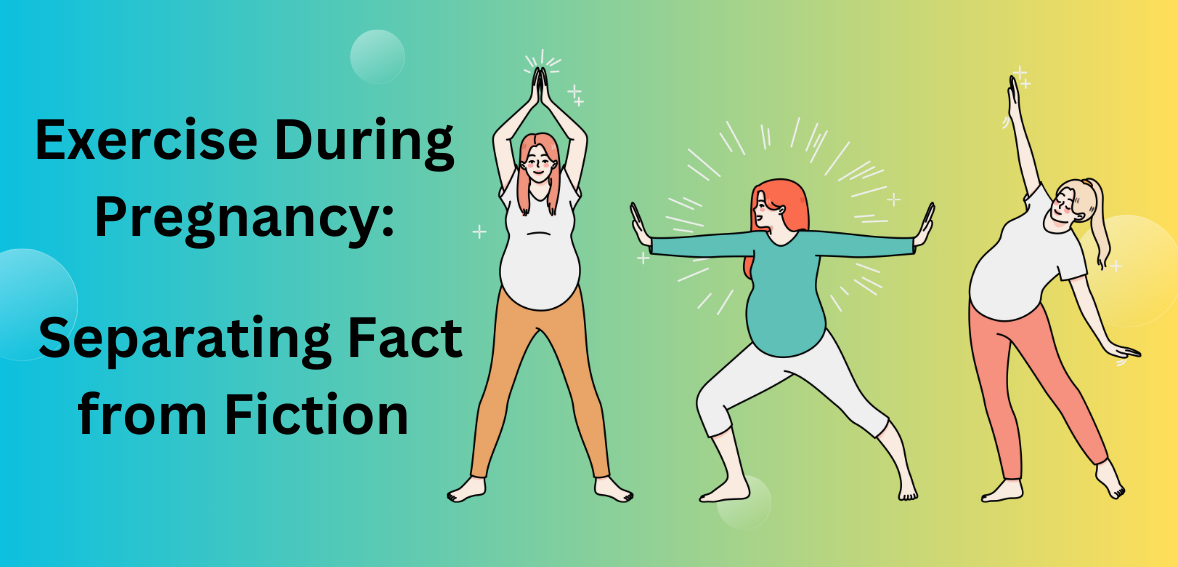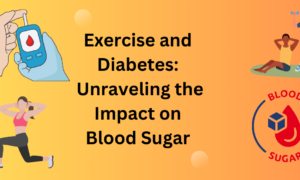Getting regular exercise is an essential part of a healthy lifestyle, and it becomes even more important during pregnancy. However, there are many misconceptions surrounding the topic of exercise and miscarriage. Can exercise cause miscarriage? This question has sparked a lot of debate among expectant mothers and healthcare professionals alike. In this blog post, we will explore the truth behind this common concern and shed light on the importance of staying active for a healthy pregnancy. So grab your yoga mat or lace up those running shoes as we dive into the world of prenatal fitness!
The Importance of Exercise During Pregnancy
Staying physically active during pregnancy is crucial for both the expectant mother and her baby. Regular exercise not only helps to maintain a healthy weight but also provides numerous benefits that contribute to overall well-being.
First and foremost, exercise can help improve cardiovascular health, boosting circulation and oxygen supply throughout the body. This increased blood flow can be particularly beneficial for the developing fetus, ensuring optimal growth and development.
Additionally, engaging in physical activity during pregnancy can alleviate common discomforts such as back pain and swelling. Gentle exercises like prenatal yoga or swimming can help strengthen muscles, improve posture, and relieve tension.
Exercise also plays a vital role in managing mood swings and reducing stress levels. Pregnancy hormones often wreak havoc on emotions, causing anxiety or depression. By releasing endorphins through exercise, it’s possible to enhance your mood while promoting relaxation.
Moreover, staying active during pregnancy has been linked to better sleep quality. As any mom-to-be knows all too well, getting enough rest becomes increasingly challenging as the months go by. Regular exercise can help regulate sleeping patterns so you wake up feeling more refreshed each day.
Remember that every woman’s journey through pregnancy is unique; therefore consult with your healthcare provider before starting any new exercise regimen. With their guidance, you can tailor an appropriate fitness plan that suits your individual needs while keeping you safe throughout this exciting time of life!
Common Misconceptions About Exercise and Pregnancy
Exercise during pregnancy is often surrounded by misconceptions and myths that can lead to confusion and unnecessary worry. It’s important to separate fact from fiction when it comes to exercising while pregnant.
One common misconception is that exercise can cause miscarriage. However, multiple studies have shown that moderate exercise does not increase the risk of miscarriage in healthy pregnancies. In fact, regular physical activity has been found to be beneficial for both the mother and the baby.
Another misconception is that pregnant women should avoid all forms of exercise. On the contrary, most healthcare professionals recommend staying active during pregnancy as long as there are no complications or medical reasons to avoid it. Exercise can help improve circulation, reduce discomfort, and even prepare your body for labor.
It’s also a myth that pregnant women should limit their heart rate during exercise. While it’s important not to overexert yourself or engage in high-intensity workouts, monitoring your heart rate alone isn’t an accurate measure of exertion during pregnancy. Instead, listen to your body and pay attention to signs of fatigue or discomfort.
Some believe that exercising while pregnant can harm the baby by restricting their oxygen supply. This is untrue as well – when you exercise, your blood vessels dilate which actually increases blood flow throughout your body including the placenta providing more oxygen for you and your baby.
In conclusion: By debunking these common misconceptions about exercise and pregnancy we can encourage expectant mothers to stay active in a safe manner throughout their pregnancies without undue anxiety
Understanding the Risk of Miscarriage
Miscarriage is a heartbreaking experience that many women fear during pregnancy. It’s important to understand the risk factors associated with miscarriage, but it’s equally crucial not to live in constant fear or blame exercise as the culprit.
It’s essential to know that exercise does not directly cause miscarriages. The majority of miscarriages occur due to chromosomal abnormalities or other genetic issues that are beyond anyone’s control. However, there are certain conditions and lifestyle factors that may increase the risk.
Age can play a role in miscarriage rates, with advanced maternal age being associated with higher risks. Chronic medical conditions such as diabetes or high blood pressure can also contribute to an increased likelihood of miscarrying.
While some studies have suggested a link between strenuous exercise and an increased risk of miscarriage, more recent research has shown no significant association between moderate-intensity physical activity and miscarriage rates. In fact, maintaining regular exercise during pregnancy has been found to have numerous benefits for both mother and baby.
It is important for pregnant women to listen to their bodies and modify their workouts accordingly. Avoid engaging in activities that carry a high risk of falls or abdominal trauma, such as contact sports or intense weightlifting routines.
While there are various factors that may contribute to the risk of miscarriage, moderate exercise is generally safe during pregnancy when done correctly and within recommended guidelines. Always consult with your healthcare provider before starting any new exercise regimen while pregnant.
Studies on Exercise and Miscarriage Rates
The link between exercise and the risk of miscarriage has been a topic of interest among expectant mothers. Many studies have sought to investigate this connection, aiming to provide clarity and reassurance for women who want to stay active during pregnancy.
One study conducted by researchers at the University of Utah analyzed data from over 90,000 pregnant women. The results showed no significant increase in the risk of miscarriage among those who engaged in moderate-intensity exercise compared to those who were sedentary. In fact, regular physical activity was associated with a reduced likelihood of miscarriage.
Another study published in the British Journal of Sports Medicine examined the impact of high-impact activities like running on pregnancy outcomes. The findings indicated that participating in such exercises did not increase the risk of miscarriage or preterm delivery.
Furthermore, a review article published in Obstetrics & Gynecology evaluated multiple studies and concluded that there is no substantial evidence linking moderate exercise during pregnancy to an increased risk of miscarriage.
These studies collectively suggest that exercising during pregnancy does not cause miscarriages. However, it is essential to note that every woman’s body is unique, and individual circumstances may vary. It is always recommended to consult with your healthcare provider before starting or continuing any exercise routine while pregnant.
Stay tuned for our next blog section where we will discuss guidelines for exercising during pregnancy!
Guidelines for Exercising During Pregnancy
Staying active during pregnancy can have numerous benefits for both the expectant mother and her baby. However, it’s important to exercise caution and follow some general guidelines to ensure a safe and healthy workout routine.
It is crucial to consult with your healthcare provider before starting any exercise program. They will be able to assess your individual health status and provide personalized recommendations based on your specific needs.
In general, most pregnant women can continue their pre-pregnancy exercise routines as long as they feel comfortable and have no medical complications. However, certain high-impact activities or sports with a risk of falls or abdominal trauma should be avoided.
Low-impact exercises such as walking, swimming, prenatal yoga, or stationary cycling are generally considered safe options during pregnancy. These activities help improve cardiovascular fitness without putting excessive stress on the joints.
It’s also important to listen to your body and pay attention to any discomfort or warning signs while exercising. If you experience dizziness, shortness of breath, chest pain, vaginal bleeding, or contractions during physical activity, stop immediately and seek medical attention.
As your pregnancy progresses, modifications may be necessary. Avoid lying flat on your back after the first trimester as this position can restrict blood flow to the uterus. Instead, opt for side-lying positions when performing exercises that require lying down.
Remember to stay hydrated by drinking plenty of water before and after workouts. Wear comfortable clothing that allows freedom of movement and provides adequate support for your changing body.
Lastly but importantly – don’t forget warm-up exercises before each workout session! This helps prepare muscles for activity by increasing circulation and flexibility.
By following these guidelines and listening to your body’s cues throughout each trimester of pregnancy you’ll be able safely enjoy the many benefits that regular exercise can bring!
Precautions to Take While Exercising During Pregnancy
When it comes to exercising during pregnancy, taking the necessary precautions is crucial for both the safety of the mother and the baby. Here are some key guidelines to keep in mind:
1. Consult with your healthcare provider: Before starting any exercise routine, it’s important to consult with your doctor or midwife. They can provide personalized advice based on your health history and current condition.
2. Choose low-impact activities: Opt for exercises that are gentle on your joints and minimize the risk of falls or injury. Walking, swimming, prenatal yoga, and stationary cycling are great options.
3. Listen to your body: Pay attention to how you feel during exercise. If you experience any pain, dizziness, shortness of breath, or excessive fatigue, stop immediately and rest.
4. Stay hydrated: Drink plenty of water before, during, and after your workout sessions to prevent dehydration.
5. Avoid overheating: Steer clear from hot environments such as saunas or hot tubs as they can raise your core body temperature too much.
6. Wear comfortable clothing and supportive shoes: Invest in proper maternity workout attire that provides support for growing breasts and belly while allowing freedom of movement.
7. Modify exercises as needed: As pregnancy progresses, certain movements may become uncomfortable or unsafe. Modify exercises accordingly by reducing intensity or range of motion as required.
Remember that every woman’s body is unique; what works for one person may not work for another.
Always listen to your healthcare provider’s recommendations above all else. By following these precautions while exercising during pregnancy, you’ll help ensure a safe and healthy experience for both you and your precious little one!
Conclusion: Staying Active for a Healthy Pregnancy
Staying active during pregnancy is crucial for maintaining a healthy pregnancy and minimizing the risk of complications. While there may be some misconceptions about exercise causing miscarriage, the reality is that moderate physical activity is generally safe and beneficial.
Numerous studies have shown that exercising during pregnancy does not increase the risk of miscarriage. In fact, regular exercise has been linked to a lower risk of gestational diabetes, high blood pressure, and excessive weight gain during pregnancy. It can also help alleviate common discomforts such as back pain and improve overall mental well-being.
It’s important to follow guidelines for exercising during pregnancy to ensure safety. Consult with your healthcare provider before starting any exercise program to address any individual concerns or health conditions you may have. They can provide personalized recommendations based on your specific circumstances.
When exercising during pregnancy, it’s essential to listen to your body and make adjustments as needed. Stay hydrated, wear comfortable clothing and supportive footwear, avoid overheating or overexertion, and pay attention to warning signs such as dizziness or shortness of breath.
Remember that every woman’s experience with exercise during pregnancy will be different. Some women may need modifications or choose low-impact activities like walking or swimming, while others may continue their usual fitness routines with slight adaptations.
In conclusion (without using those exact words), staying physically active throughout your pregnancy can contribute to a healthier journey for both you and your baby. Don’t let unfounded fears about exercise causing miscarriage hold you back from enjoying the benefits of an active lifestyle while pregnant. Embrace movement in moderation, prioritize safety precautions recommended by experts, and savor this special time in your life knowing that staying active supports a healthy start for both you and your little one!



























